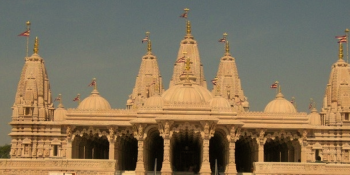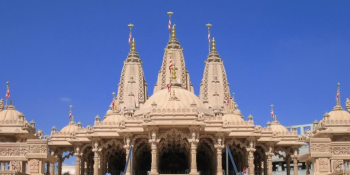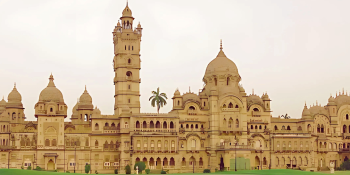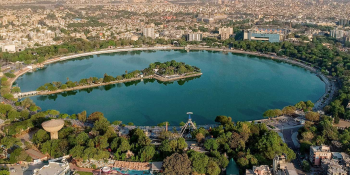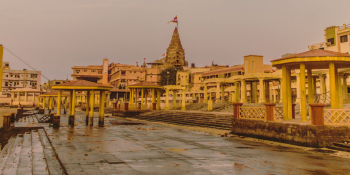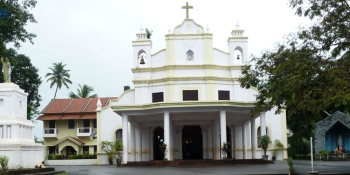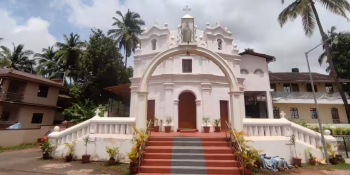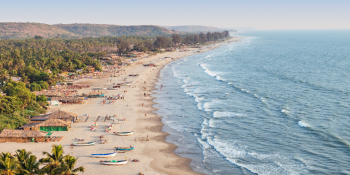Nestled in the heart of South Goa, Margao is a charming city that offers a unique blend of cultural heritage, modernity, and natural beauty. Often overshadowed by its more famous counterparts like Panjim and Calangute, Margao has remained an undiscovered gem for many travelers. However, the city is an essential gateway to the southern part of Goa, known for its quieter beaches, historical landmarks, and the authentic Goan way of life. Whether you’re arriving by air, train, or bus, Margao welcomes you with open arms. In this blog, we will explore the city’s major travel connections, as well as the best attractions that make Margao a must-visit destination.
Travel Access: Getting to Margao
1. Dabolim Airport (Goa International Airport)
Margao’s primary airport, Dabolim Airport (also known as Goa International Airport), is located about 26 kilometers away from the city center, making it the most convenient option for travelers arriving by air. The airport is well-connected to major cities in India and has international flights, particularly from the Middle East, Russia, and Europe. As one of the busiest airports in India, Dabolim is equipped with all modern amenities including baggage services, duty-free shopping, lounges, and eateries.
Upon arriving at the airport, you can take a taxi or rent a vehicle to reach Margao in about 30 minutes, depending on traffic. Alternatively, several shuttle services and pre-paid taxi counters are available for a hassle-free transfer. Many travelers choose to hire a car to explore the city and nearby areas at their own pace.
2. Madgaon Railway Station
For those who prefer traveling by train, Margao is home to Madgaon Railway Station (also known as Margao Railway Station), one of the busiest railway stations in Goa. Located approximately 2 kilometers from the city center, the station is a key transit point for tourists traveling from cities like Mumbai, Pune, Bangalore, and Chennai.
The station is well-connected to major cities across India, with frequent trains running to and from Mumbai, Delhi, and other southern and western regions. The station offers a variety of facilities, such as waiting areas, food stalls, and clean washrooms, ensuring a comfortable travel experience for passengers. Once you disembark at Madgaon, you can hire a rickshaw or taxi to reach your hotel or the city center. For those who prefer a leisurely walk, the station is close enough to explore the local markets and eateries.
3. Bus Connectivity
Margao is also an important hub for bus travel in Goa. The city is well-connected to other parts of the state and neighboring regions through its well-organized bus station, the Margao KTC Bus Stand. This bus stand serves both long-distance and local buses, making it an essential transit point for travelers.
If you’re arriving from other parts of Goa, local buses and state-run services will bring you to Margao. The KTC bus stand is located about 1 kilometer from the city center, and taxis and rickshaws are easily available for short transfers to popular destinations. Intercity buses to Panjim, Vasco da Gama, and other towns in Goa operate frequently from this terminal.
Exploring the Attractions of Margao
Now that you’ve arrived in Margao, it’s time to uncover the city’s top attractions, which showcase its rich cultural, historical, and natural heritage.
1. The Holy Spirit Church
Margao is home to several historical landmarks, and one of the most iconic is the Holy Spirit Church, located at the heart of the city. Built in 1564 by the Portuguese, the church reflects Goa’s colonial past and its strong Christian influences. The church’s magnificent facade is a fine example of baroque architecture, with intricate woodwork, statues, and painted altars. Inside, visitors can marvel at the beautiful wooden ceiling and elaborate altars dedicated to the Holy Spirit. The church is also a focal point for local religious festivals and events, including the popular Feast of the Holy Spirit.
2. Margao Market (Fatorda Market)
For those interested in experiencing the hustle and bustle of local Goan life, a visit to the Margao Market is a must. The market is an excellent spot to buy fresh produce, spices, fish, and traditional Goan handicrafts. It is housed in a charming colonial-era building and offers an array of goods at reasonable prices. A walk through the market will allow you to interact with friendly local vendors and experience the authentic atmosphere of the region.
In addition to food and produce, the market is also a great place to purchase souvenirs such as colorful textiles, pottery, and jewelry. Visitors can also sample delicious street food, including traditional Goan snacks like sannas (sweet coconut bread) and bhel puri.
3. Colva Beach
While Margao itself may not be directly on the coastline, it is just a short drive away from Colva Beach, one of the most popular beaches in South Goa. Known for its pristine white sands and calm waters, Colva Beach is a haven for sunbathers, swimmers, and water sports enthusiasts. The beach has a relaxed vibe, making it ideal for families and solo travelers looking to unwind in a serene environment.
The beach is also lined with a variety of beach shacks, restaurants, and bars, where you can savor Goan seafood and refreshing cocktails. Colva is a great place to catch the sunset or take a peaceful walk along the shoreline, with a backdrop of swaying palm trees.
4. Seraulim Village
For those looking to explore the rural side of Goa, Seraulim Village, located just outside of Margao, is a charming destination. The village is known for its traditional Goan houses, lush greenery, and laid-back atmosphere. Visitors can take a walk through the narrow lanes of the village, interact with the locals, and witness the authentic Goan lifestyle.
The village is also home to Seraulim Church, another beautiful church with a unique history. The surrounding landscapes offer plenty of opportunities for photography, nature walks, and birdwatching, as the area is rich in flora and fauna.
5. Cabo de Rama Fort
Located about 30 minutes from Margao, Cabo de Rama Fort is a must-visit for history buffs and nature lovers alike. Perched on a hilltop overlooking the Arabian Sea, this fort was originally built by the Hindu rulers of Goa and later renovated by the Portuguese. The fort offers stunning panoramic views of the coastline and the surrounding countryside.
Though the fort is now in ruins, visitors can still explore the remnants of its structure, including the watchtowers and the chapel inside. Cabo de Rama is also an excellent spot for picnics, and the surrounding area is great for nature trails and birdwatching.
6. Ancestral Goa Museum
For a deeper understanding of Goan culture and history, a visit to the Ancestral Goa Museum in Loutolim, located near Margao, is a great choice. The museum offers a fascinating glimpse into the traditional lifestyle of the Goan people, with exhibits showcasing vintage items such as household utensils, musical instruments, and agricultural tools.
The museum also features a life-sized model of a traditional Goan village, complete with a mud hut, a rice mill, and a Goan kitchen. Visitors can also learn about the different communities that have shaped Goa’s rich cultural heritage.
Margao is a vibrant and historic city that offers travelers a chance to experience the essence of Goa beyond its popular beaches. Whether you’re arriving by air, train, or bus, the city is easily accessible and well-connected. With its blend of natural beauty, rich cultural heritage, and proximity to South Goa’s famous attractions, Margao is the perfect destination for those seeking an authentic Goan experience.
From the architectural splendor of the Holy Spirit Church to the tranquil beaches of Colva, Margao has something for everyone. Whether you’re a history enthusiast, a nature lover, or someone simply looking to relax and unwind, this charming city offers a memorable and enriching travel experience.

